CRICK, Francis Harry Compton (1916-2004). An important archive containing 19 autograph letters, 11 typed letters, 2 autograph card, and 2 printed e-mails from Francis Crick to Georg Kreisel, mathematician and internationally known expert on the foundations of logic and mathematics. Approximately 42 pages, various 4to sizes, many on The Salk Institute letterhead. (Archive also includes copies of Kreisel’s correspondence to Crick.) Mostly La Jolla, 1989-1996.
CRICK, Francis Harry Compton (1916-2004). An important archive containing 19 autograph letters, 11 typed letters, 2 autograph card, and 2 printed e-mails from Francis Crick to Georg Kreisel, mathematician and internationally known expert on the foundations of logic and mathematics. Approximately 42 pages, various 4to sizes, many on The Salk Institute letterhead. (Archive also includes copies of Kreisel’s correspondence to Crick.) Mostly La Jolla, 1989-1996. Francis Crick is most noted for being a co-discoverer of the structure of the DNA molecule in 1953 with James Watson Together with Watson and Maurice Wilkins, he was jointly awarded the 1962 Nobel Prize in Physiology or Medicine "for their discoveries concerning the molecular structure of nucleic acids and its significance for information transfer in living material". During the latter part of his career, he held the post of J.W. Kieckhefer Distinguished Research Professor at the Salk Institute for Biological Studies in La Jolla, California, where his research centered on theoretical neurobiology and attempts to advance the scientific study of human consciousness. He remained in this post until his death in 2004. Georg Kreisel (1923-2015) was born in Graz and came from a Jewish background; his family sent him to the United Kingdom before the Anschluss, where he studied mathematics at Trinity College, Cambridge, and then, during World War II, worked on military subjects. After the war he returned to Cambridge and received his doctorate. While a student at Cambridge, Kreisel was the student most respected by Ludwig Wittgenstein "In 1944--when Kreisel was still only twenty-one--Wittgenstein shocked Rush Rhees by declaring Kreisel to be the most able philosopher he had ever met who was also a mathematician" (Ray Monk, Wittgenstein: The Duty of Genius , Penguin, 1991, p. 498). He taught at the University of Reading until 1954 and then worked at the Institute for Advanced Study in Princeton from 1955 to 1957, following an invitation by Kurt Gödel. He was elected to the Royal Society in 1966. Subsequently he taught at Stanford University and the University of Paris. Kreisel was appointed a professor at Stanford University in 1962 and remained on the faculty there until he retired in 1985. Kreisel worked in various areas of logic, and especially in proof theory, where he is known for his so-called "unwinding" program, whose aim was to extract constructive content from superficially non-constructive proofs. After retirement Kreisel lived in Salzburg, Austria. He wrote several biographies of mathematicians including Kurt Gödel, Bertrand Russell, and Luitzen Egbertus Jan Brouwer He died in Salzburg, aged 91. Kreisel first met Crick when both were in the Royal Navy during WWII, and later developed a very close friendship during their time in Cambridge, where Kreisel was in Wittgenstein's circle. They corresponded ever since. The contents of the letters are detailed and diverse, but most are concerned with the following main topics: 1. Correspondence concerning Crick’s book What Mad Pursuit . 2. Correspondence about Crick’s book The Astonishing Hypothesis , and Penrose’s book The Emperor’s New Mind and the question how the brain works . 3. Correspondence requesting information from Kreisel about the foundations of logic and mathematics, especially about the theory of proofs and Turing machines. In other letters Crick discusses Dyson’s ideas on the origin of life, “how I do science,” meeting Wittgenstein, why the discovery of DNA structure “was so exciting,” and personal matters including his heart and health issues. Crick writes on how he “does” science on 8 August 1993: “You are quite right that I am not ‘scientific’ about everything—how can one be? I suppose I use strict scientific criteria when I am working in some field and have a fairly detailed knowledge of the basic facts and current theories. On the other hand when the matter is one of ‘personal experience’ I often ado
CRICK, Francis Harry Compton (1916-2004). An important archive containing 19 autograph letters, 11 typed letters, 2 autograph card, and 2 printed e-mails from Francis Crick to Georg Kreisel, mathematician and internationally known expert on the foundations of logic and mathematics. Approximately 42 pages, various 4to sizes, many on The Salk Institute letterhead. (Archive also includes copies of Kreisel’s correspondence to Crick.) Mostly La Jolla, 1989-1996.
CRICK, Francis Harry Compton (1916-2004). An important archive containing 19 autograph letters, 11 typed letters, 2 autograph card, and 2 printed e-mails from Francis Crick to Georg Kreisel, mathematician and internationally known expert on the foundations of logic and mathematics. Approximately 42 pages, various 4to sizes, many on The Salk Institute letterhead. (Archive also includes copies of Kreisel’s correspondence to Crick.) Mostly La Jolla, 1989-1996. Francis Crick is most noted for being a co-discoverer of the structure of the DNA molecule in 1953 with James Watson Together with Watson and Maurice Wilkins, he was jointly awarded the 1962 Nobel Prize in Physiology or Medicine "for their discoveries concerning the molecular structure of nucleic acids and its significance for information transfer in living material". During the latter part of his career, he held the post of J.W. Kieckhefer Distinguished Research Professor at the Salk Institute for Biological Studies in La Jolla, California, where his research centered on theoretical neurobiology and attempts to advance the scientific study of human consciousness. He remained in this post until his death in 2004. Georg Kreisel (1923-2015) was born in Graz and came from a Jewish background; his family sent him to the United Kingdom before the Anschluss, where he studied mathematics at Trinity College, Cambridge, and then, during World War II, worked on military subjects. After the war he returned to Cambridge and received his doctorate. While a student at Cambridge, Kreisel was the student most respected by Ludwig Wittgenstein "In 1944--when Kreisel was still only twenty-one--Wittgenstein shocked Rush Rhees by declaring Kreisel to be the most able philosopher he had ever met who was also a mathematician" (Ray Monk, Wittgenstein: The Duty of Genius , Penguin, 1991, p. 498). He taught at the University of Reading until 1954 and then worked at the Institute for Advanced Study in Princeton from 1955 to 1957, following an invitation by Kurt Gödel. He was elected to the Royal Society in 1966. Subsequently he taught at Stanford University and the University of Paris. Kreisel was appointed a professor at Stanford University in 1962 and remained on the faculty there until he retired in 1985. Kreisel worked in various areas of logic, and especially in proof theory, where he is known for his so-called "unwinding" program, whose aim was to extract constructive content from superficially non-constructive proofs. After retirement Kreisel lived in Salzburg, Austria. He wrote several biographies of mathematicians including Kurt Gödel, Bertrand Russell, and Luitzen Egbertus Jan Brouwer He died in Salzburg, aged 91. Kreisel first met Crick when both were in the Royal Navy during WWII, and later developed a very close friendship during their time in Cambridge, where Kreisel was in Wittgenstein's circle. They corresponded ever since. The contents of the letters are detailed and diverse, but most are concerned with the following main topics: 1. Correspondence concerning Crick’s book What Mad Pursuit . 2. Correspondence about Crick’s book The Astonishing Hypothesis , and Penrose’s book The Emperor’s New Mind and the question how the brain works . 3. Correspondence requesting information from Kreisel about the foundations of logic and mathematics, especially about the theory of proofs and Turing machines. In other letters Crick discusses Dyson’s ideas on the origin of life, “how I do science,” meeting Wittgenstein, why the discovery of DNA structure “was so exciting,” and personal matters including his heart and health issues. Crick writes on how he “does” science on 8 August 1993: “You are quite right that I am not ‘scientific’ about everything—how can one be? I suppose I use strict scientific criteria when I am working in some field and have a fairly detailed knowledge of the basic facts and current theories. On the other hand when the matter is one of ‘personal experience’ I often ado
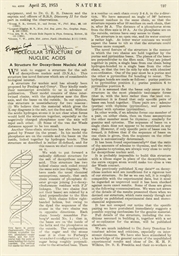
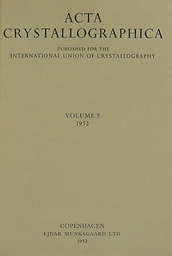

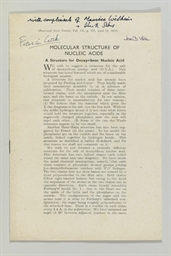
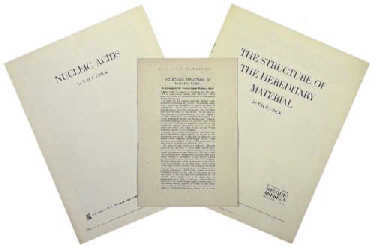




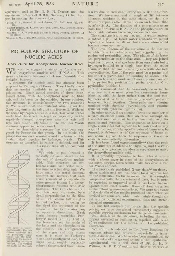

.jpg?w=400?width=1600&quality=70)
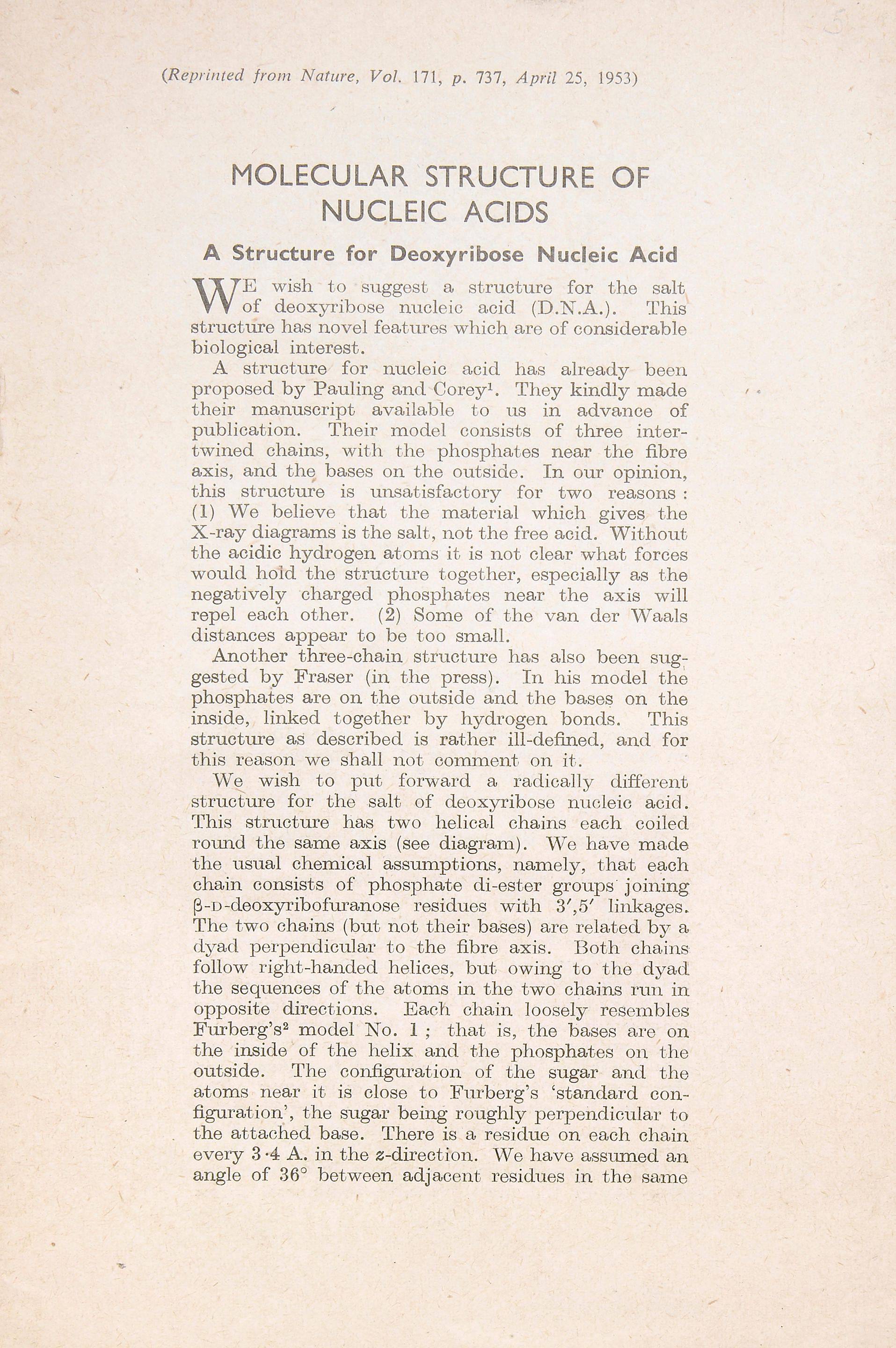


Try LotSearch and its premium features for 7 days - without any costs!
Be notified automatically about new items in upcoming auctions.
Create an alert